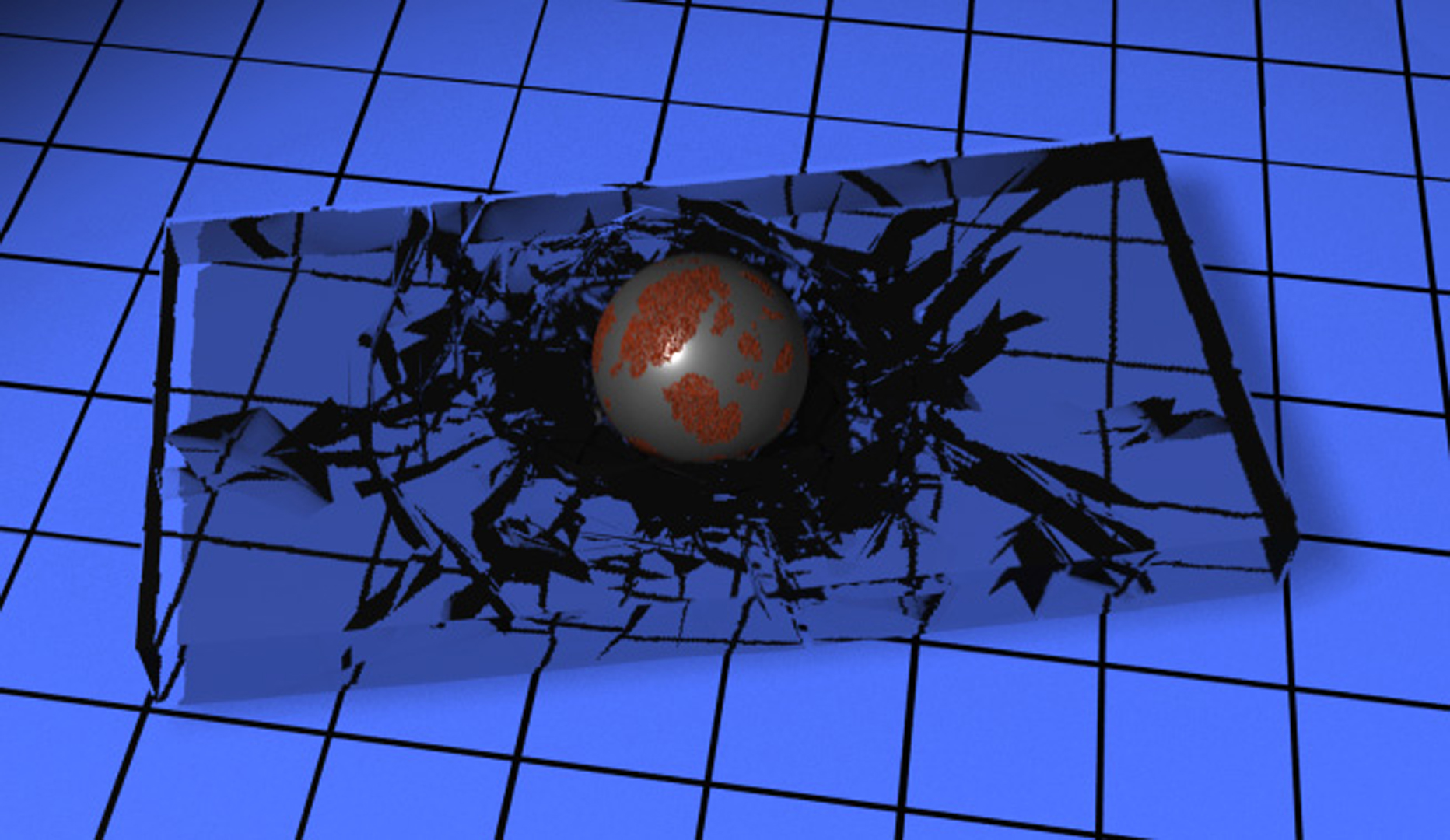“Graphical modeling and animation of brittle fracture” by O’Brien and Hodgins
Conference:
Type(s):
Title:
- Graphical modeling and animation of brittle fracture
Presenter(s)/Author(s):
Abstract:
In this paper, we augment existing techniques for simulating flexible objects to include models for crack initiation and propagation in three-dimensional volumes. By analyzing the stress tensors computed over a finite element model, the simulation determines where cracks should initiate and in what directions they should propagate. We demonstrate our results with animations of breaking bowls, cracking walls, and objects that fracture when they collide. By varying the shape of the objects, the material properties, and the initial conditions of the simulations, we can create strikingly different effects ranging from a wall that shatters when it is hit by a wrecking ball to a bowl that breaks in two when it is dropped on edge.
References:
1. T. L. Anderson. Fracture Mechanics: Fundamentals and Applications. CRC Press, Boca Raton, second edition, 1995.]]
2. D. Baraff and A. Witkin. Large steps in cloth simulation. In SIGGRAPH 98 Conference Proceedings, Annual Conference Series, pages 43-54. ACM SIGGRAPH, Addison Wesley, July 1998.]]
3. R. D. Cook, D. S. Malkus, and M. E. Plesha. Concepts and Applications of Finite Element Analysis. John Wiley & Sons, New York, third edition, 1989.]]
4. T. DeRose, M. Kass, and T. Truong. Subdivision surfaces in character animation. In SIGGRAPH 98 Conference Proceedings, Annual Conference Series, pages 85-94. ACM SIG- GRAPH, Addison Wesley, July 1998.]]
5. N. Foster and D. Metaxas. Realistic animation of liquids. In Graphics Interface ’96, pages 204-212, May 1996.]]
6. Y. C. Fung. Foundations of Solid Mechanics. Prentice-Hall, Englewood Cliffs, N.J., 1965.]]
7. Y. C. Fung. A First Course in Continuum Mechanics. Prentice-Hall, Englewood Cliffs, N.J., 1969.]]
8. K. Hirota, Y. Tanoue, and T. Kaneko. Generation of crack patterns with a physical model. The Visual Computer, 14:126- 137, 1998.]]
9. O. Mazarak, C. Martins, and J. Amanatides. Animating exploding objects. In Graphics Interface ’99, June 1999.]]
10. M. Neff and E. Fiume. A visual model for blast waves and fracture. In Graphics Interface ’99, June 1999.]]
11. T. Nishioka. Computational dynamic fracture mechanics. International Journal of Fracture, 86:127-159, 1997.]]
12. A. Norton, G. Turk, B. Bacon, J. Gerth, and P. Sweeney. Animation of fracture by physical modeling. The Visual Computer, 7:210-217, 1991.]]
13. W. H. Press, B. P. Flannery, S. A. Teukolsky, and W. T. Vetterling. Numerical Recipes in C. Cambridge University Press, second edition, 1994.]]
14. B. Robertson. Antz-piration. Computer Graphics World, 21(10), 1998.]]
15. B. Robertson. Meet Geri: The new face of animation. Computer Graphics World, 21(2), 1998.]]
16. J. Schoberl. NETGEN – An advancing front 2D/3D-mesh generator based on abstract rules. Computing and Visualization in Science, 1:41-52, 1997.]]
17. D. Terzopoulos. Regularization of inverse visual problems involving discontinuities. IEEE Transactions on Pattern Analysis and Machine Intelligence, 8(4):413-424, July 1986.]]
18. D. Terzopoulos and K. Fleischer. Deformable models. The Visual Computer, 4:306-331, 1988.]]
19. D. Terzopoulos and K. Fleischer. Modeling inelastic deformation: Viscoelasticity, plasticity, fracture. In Computer Graphics (SIGGRAPH ’88 Proceedings), volume 22, pages 269- 278, August 1988.]]





